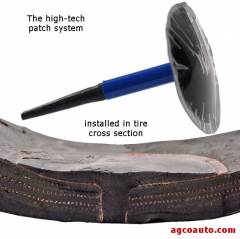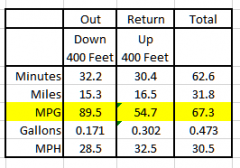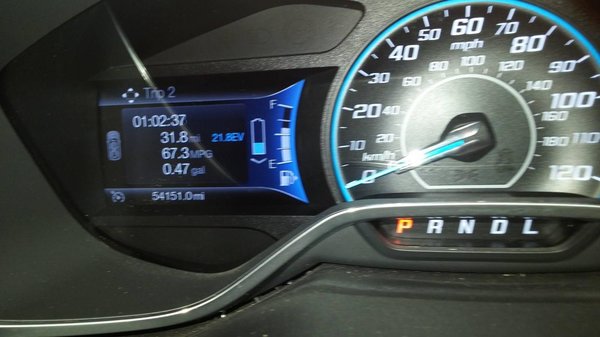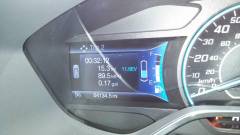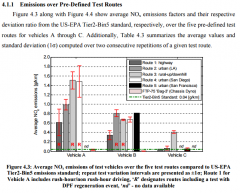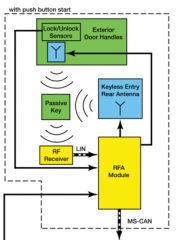

plus 3 golfer
Hybrid Member-
Posts
2,688 -
Joined
-
Last visited
-
Days Won
356
Content Type
Profiles
Forums
Gallery
Everything posted by plus 3 golfer
-
I'm not saying the process wouldn't require change. But, If states care about emissions given the magnitude of NOX emissions of the affected vehicles, the states can easily run affected VINs against their database of registered vehicles. I don't know how many affected TDIs are in the Phoenix area but I'll guess 10,000. So, that might be the equivalent of 400,000 "clean" diesels. What the states do to ensure emissions compliance of the affected vehicles and how they do it will require work. It could simply require a signed statement (or box checked on the renewal page) from the owner that the work was done or that they understand the work must be done by the next renewal period on their car. Of course there will always be those that will "cheat" like VW (as they do now with illegal tunes, DPF removal and so forth). :) New from Conumer Reports on the VW "cheats".
-
And it will be easy to identify affected vehicles via VIN at registration renewal time. ;) I would think that most states that have implemented emissions testing (in part or totally) will not renew the registration of affected vehicles until the recall work is done in a timely manner. The "red-brown" haze is clearly visible over the Valley of the Sun on many days.
-
Yes. the Hybrid doesn't have an auxiliary cabin heater like the NRG.
-
If the code is intermittent, then the condition causing the fault may be difficult to pin down. Did the dealer change Sensor 2 in Nov. 2013, when the DTC was first found? P2183 - Engine Coolant Temperature Sensor 2 Circuit Range/Performance Auxiliary Climate Control - System Operation and Component Description System Operation Cabin Coolant Heater System The cabin coolant heater system provides warm coolant to the heater core to warm the passenger compartment whenever the DATC module request heat and the vehicle is in a driving mode, remoted started, or doing Cabin Drive-Conditioning . A SOBDMC controlled cabin coolant heater warms the coolant. The cabin heater coolant diverter valve allows two modes: Either an isolated coolant loop with cabin coolant heater, heater core, and cabin heater coolant pump or a combined loop of those components along with the engine and other coolant components. A cabin heater coolant temperature sensor (also known as ECT sensor 2) in the cabin heater system provides the PCM with coolant temperature information. Cabin Heater Coolant Temperature Sensor The PCM monitors the cabin heater coolant temperature sensor (also known as ECT sensor 2) and provides the PCM with coolant temperature information.
-

Ford Tire Care - your experience? Mine so far...
plus 3 golfer replied to CmaxBK's topic in Wheels & Tires
I've found that a reputable tire shop will not attempt a "proper" fix with a sticky cord already in place likely for liability reasons. I've used the sticky cords for many years and never had an issue with the sticky patch. The link didn't work but here's pic of proper patch.- 9 replies
-
- triplecare
- triple care
-
(and 5 more)
Tagged with:
-
From the album: Plus 3 Golfer
-
Here we go again. The C-MAX ain't no 47 mpg car per the EPA tests. Also, apparently everyone should drive like those that get high FE. It's easy to get 50+ (even 60+). But some value time more than saving a few $ (especially with gas prices again below $2 a gallon in the Phoenix area). ;) I'm heading out to get a security system battery tested. I'll take the side streets instead of the freeway and show you what can be done. :) EDIT: RESULTS ARE IN - Just normal driving on side streets, time lights as I always do, coast, accelerate moderately, no AC. The same trip on the freeway will average about 60+ MPH, get 42-43 mpg and take about 30+ minutes less. So, what's great about 50+ mpg? Just have to sacrifice time time for slower speed (which I won't do). ;) BTW, I took a longer route home to avoid 3 school zones where I had to slow down to 15 mph. To turn this on topic, my 2009 TDI would easily get in the high 50s and mid 40s on the freeway for these trips.
-
I'll sell you mine. :) :) The cover limits space for stuff either when in place or laying in the hatch area. If one thinks it might help prevent a break-in (peace of mind), it might not be a $214.17 place holder (my C-Max cover along with my Rogue cover "reserve" a space on a shelf in the garage). ;)
-
IMO, the maximum improvement in FE would be the ratio of the BTU content of E10 vs E0 regular gas which is somewhere around 3+% on average. The BTU content of premium octane vs regular octane fuel is on average 0.7% higher for premium gas (Chevron's Motor Gasolines Technical Review). So, I think 5% FE improvement is about it if the E0 is premium fuel. To break even on a $0.40 price differential, gas would have to be about $8 per gallon. My guess is that if E10 got up to $8 a gallon, E0 would be several times the $0.40 price difference.
-
Here's the control diagram for the keyless entry with push button start and a pic of the rear door handle showing the electrical circuit to the handle (front handle is similar) from the 2013 workshop manual. Also, I can't visually see sensors under any of the door handles but obviously the sensors are there as touching the door handles unlock the car. The RF antenna enable the keyless entry key FOB to be validated. The hatch unlock evidently does not have a sensor.
- 49 replies
-
- Intelligent access
- Proximity key
-
(and 1 more)
Tagged with:
-
My comments above in red. :)
-

battery at half charge on a new 2015 SEL hybrid wagon
plus 3 golfer replied to syncmax's topic in Lounge: C-MAX Hybrid
The battery symbol is not an indication of the capacity of the High Voltage Battery. It's a proxy for the operating range of the HBV. The normal operating range of the HVB is generally between about 40% and 55% State of Charge (SOC) of the full capacity of the HVB. The maximum operating range is between near 30% SOC (generally need to use EV+ and very slow speed to discharge the HVB to lower 30%) and about 70% SOC (need significant regeneration by coasting down a long grade using grade assist or brake from a high rate of speed to charge the HVB near 70%). So what you are seeing is normal - you'll likely see what looks to be about 1/3 full to maybe 3/4 full battery symbol. Here's a graph that shows the relationship between the actual SOC and the battery symbol display. Note: if you are seeing about 1/3, the SOC is around 40%. If you are seeing about 75%, the SOC is around 55%. By operating the battery as such, we should see a long, long HVB life. -
That's where I store them in my Hybrid.
- 49 replies
-
- Intelligent access
- Proximity key
-
(and 1 more)
Tagged with:
-
That's what the manual says (see my post 6 above) but touching the rear door handles unlocks all doors on my 2013 SEL.
- 49 replies
-
- Intelligent access
- Proximity key
-
(and 1 more)
Tagged with:
-
Correct, opening the hatch does not unlock the doors only the hatch, I edited my post above for clarity.
- 49 replies
-
- Intelligent access
- Proximity key
-
(and 1 more)
Tagged with:
-
Maybe not in Canada. :) With FOB in pocket I can unlock my 2013 SEL by the front and rear door handles and by pushing the release latch under the hatch handle, the rear hatch unlocks but not the doors. Build date is Nov. 2012.
- 49 replies
-
- Intelligent access
- Proximity key
-
(and 1 more)
Tagged with:
-
I think FORScan might be able to access enough data to assess the capacity level of the HVB. Someone knowledgeable should be able to take the data from new, low mileage and high mileage vehicles and perhaps come up with software something like Leaf owners have to estimate capacity. Why do you think you have a loss of capacity? I would envision that the operating range of the HVB would virtually stay the same as there is IMO sufficient installed HVB capacity to allow the normal operating kWh to remain virtually the same. An interesting point is that early on when I monitored SOC going down long steep grades (filling up the HVB), the highest level of SOC I saw was just below 70% (IIRC around 69.7%). Recently 52 k miles, SOC has exceeded 70% (71.2% IIRC). Could we be seeing the overall 1.4 kWh of a new HVB declining (which we should expect) but that the normal operating range is staying virtually constant as evidenced by an increase in SOC %. We are using a higher % of the declining HVB capacity. Most recent recording is below showing about 71.2% SOC.
-
I think you haven't got out of the 60's mentality. This is 2015. ;) If a 60's car is timed for regular fuel, putting premium fuel in would likely result in fuel out the exhaust pipe because the timing would likely be too retarded for premium fuel. Premium fuel requires more time to burn than regular fuel. Hence, the timing must be advanced for premium fuel (early ignition of the fuel). If the timing is set for regular fuel (the faster burning fuel), all the premium fuel may not be burned if the timing is left unchanged. As Paul says the above is virtually not an issue today nor has it been for many decades.


